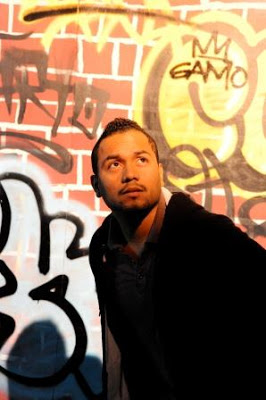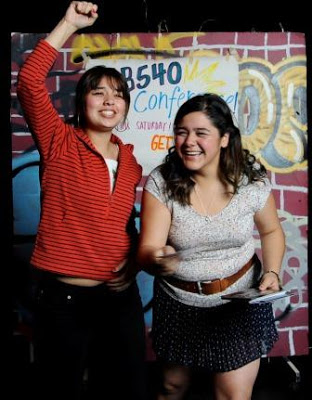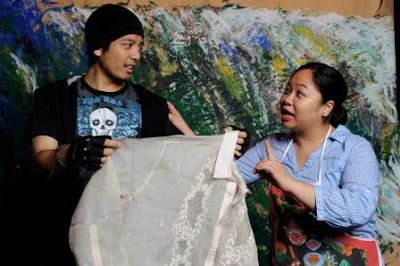Although the plots of many musicals have been built around love stories and comic devices, a growing number can be identified as "message" musicals. Whether commenting on religious persecution, racism, controversial medical issues, interfaith, interracial, and same-sex relationships, the creative teams for many shows have given their audiences new opportunities to discuss the political issues of the day. Here's Rose Marie Jun (known primarily for her role as Sally Rogers on The Dick Van Dyke Show) performing Harold Rome's "Sing Me A Song With Social Significance" from 1937's Pins and Needles, a musical revue performed by members of the International Ladies' Garment Workers' Union (ILGWU).
On August 1, 2001, the DREAM Act was introduced by Senators Dick Durbin and Orrin Hatch. Since then, immigration reform has faced a rough and rocky uphill battle.
- Less than six weeks after the bill's introduction, the September 11 attacks on the World Trade Center and The Pentagon sent the nation into a tailspin of paranoia, xenophobia, and most particularly, Islamophobia.
- As the United States launched wars against Iraq and Afghanistan, the United States Armed Forces offered many immigrants a path to citizenship (according to Wikipedia, in 2009 an estimated 29,000 members of the military were foreign-born immigrants who were not yet American citizens).
- On April 23, 2010, Governor Jan Brewer signed Arizona's controversial SB1070 into law, making it a state misdemeanor for an alien to be in Arizona without carrying the necessary identification documents on his person.
- Although the House of Representatives passed the DREAM Act on December 8, 2010, it failed in the Senate.
- In July of 2011, the California DREAM Act provided access to private college scholarships for state schools to students who were illegal immigrants.
- In August of 2011, the state of Illinois authorized a similar plan for legal as well as illegal children of immigrants.
- During a Republican Presidential primary debate on January 23, 2012, Mitt Romney concisely described his plan for dealing with illegal immigration using the politically loaded term "self deportation."
- During 2012, Glenn Beck tried to stoke conservative outrage with frequent references to the phenomenon of anchor babies.
On June 15, 2012, President Obama made the following statement about immigration reform.
Barely six weeks into 2013, Bay area audiences witnessed the world premiere of a fascinating new musical that deals with immigration reform. How did the project come about?
Following passage of the California DREAM Act, the Marsh Youth Theatre in San Francisco embarked on creating a new piece of musical theatre which focused on undocumented students living in the Bay area who lived under the constant threat of deportation. Using the methodology and techniques of the Voice of Witness Education Program, members of MYT's Teen Troupe gathered oral histories for In and Out of Shadows from people in their own social circles as well as those referred to them through community organizations such as:
- AB540 Clubs at City College of San Francisco
- SOMCAN (South of Market Community Action Network)
- Leadership Public Schools in Richmond
- ASPIRE (Asian Students Promoting Immigration Reform and Education)
J. Adan Ruiz as Juan in the Marsh Youth Theatre's production
of In and Out of Shadows (Photo by: Katia Fuentes)
Backed by additional funding from NALAC (National Association of Latino Arts and Culture) and the Creative Work Fund, the show's musical score (composed by MYT Director Emily Klion and George Brooks) was inspired by the sounds of jazz, hip hop, and Mexican mariachi music. As director Cliff Mayotte notes: "For many of the performers in this production, these stories are not disembodied tales, but accurate reflections of their day-to-day experiences. There is real power in being able to tell your own story and real power in bearing witness to the person telling it."
Bianca Catalan and Angelina Orrelanos are two of the
teenagers in In and Out of Shadows (Photo by: Katia Fuentes)
Playwright/poet Gary Soto was tasked with transforming the oral histories collected by the students into a piece of theatre about the experiences of undocumented teens living in the East Bay communities of Richmond and Pinole. As he recalls:
"As a Mexican-American author of 40-plus books, I have a large readership among Latino youth (arguably the largest in the country) and have visited more than 400 schools during the last 20 years. Elementary through college, students know something about my writing. The focus of my visits has been schools in the San Joaquin Valley (which houses a large undocumented workforce in rural labor). I've also visited lots of schools in the Los Angeles basin and am aware of the struggles among urban youth. For several years I was a board member of the CHA House, an educational program that brings youth from their small hometowns (Coalinga, Huron, and Avenal) to study at UC Berkeley. I have never asked, but I suspect that about half of the parents of these children are undocumented.
In and Out of Shadows is not dumbed-down theatre; it's really clever theatre. There's music, there's dance, we have a squirt gun incident, and we'll be throwing candy into the audience. It was worrisome to me that some groups weren't represented because they wouldn't come forward (not one Chinese student was interviewed). There may be risk, but we don't think La Migra (the border patrol) would show up to gather up some of the kids and parents in the audience."

Playwright, poet, and author Gary Soto
In and Out of Shadows is filled with stories about kids who didn't want to change their name when they snuck across the border, teens who went on vacation in Mexico and were stopped by immigration authorities when they tried to reenter the United States, and those whose families consist of documented and undocumented immigrants. From the hard-working Filipino-American mother who is arrested and threatened with deportation after her employer is investigated for failure to pay his taxes to the affable jock from British Columbia, the evening is peppered with Tagalog, Spanish, Spanglish and other languages commonly heard in the Bay area.
Louel Senores and Deanna Palaganas (Photo by: Katia Fuentes)
Whether one focuses on the young man with no skills (other than his abundant charm) or the girl who wants to become a doctor; whether one looks at the pair of boys who want to become DJs or the Indonesian girl who tells her friends about her native country, as the students struggle to prepare their personal statements for an AB 540 conference at UC Berkeley, they share what it was like to have to be sedated with cough syrup or crawl through sewers in order to enter the United States.
And what do these children look like when they become adults? Here's the founder of Define American, Jose Antonio Vargas (who, in 2008, was part of the Washington Post's team of Pulitzer prize-winning journalists who covered the shootings at Virginia Tech), as he recently testified before the U.S. Senate Judiciary Committee.
In an op-ed piece published in The New York Times, Vargas stressed that:
"There are no words to describe just how much stress and heartbreak my immigration status, and my choice to go public with it, has caused my grandmother. Because of her I almost did not speak out about being undocumented. But it was also because of her -- and my grandfather, who died in 2007, and my mother, whom I have not seen in almost 20 years -- because of all their sacrifices, that I will be able to speak in Congress. I am here because of them."
To read more of George Heymont go to My Cultural Landscape



